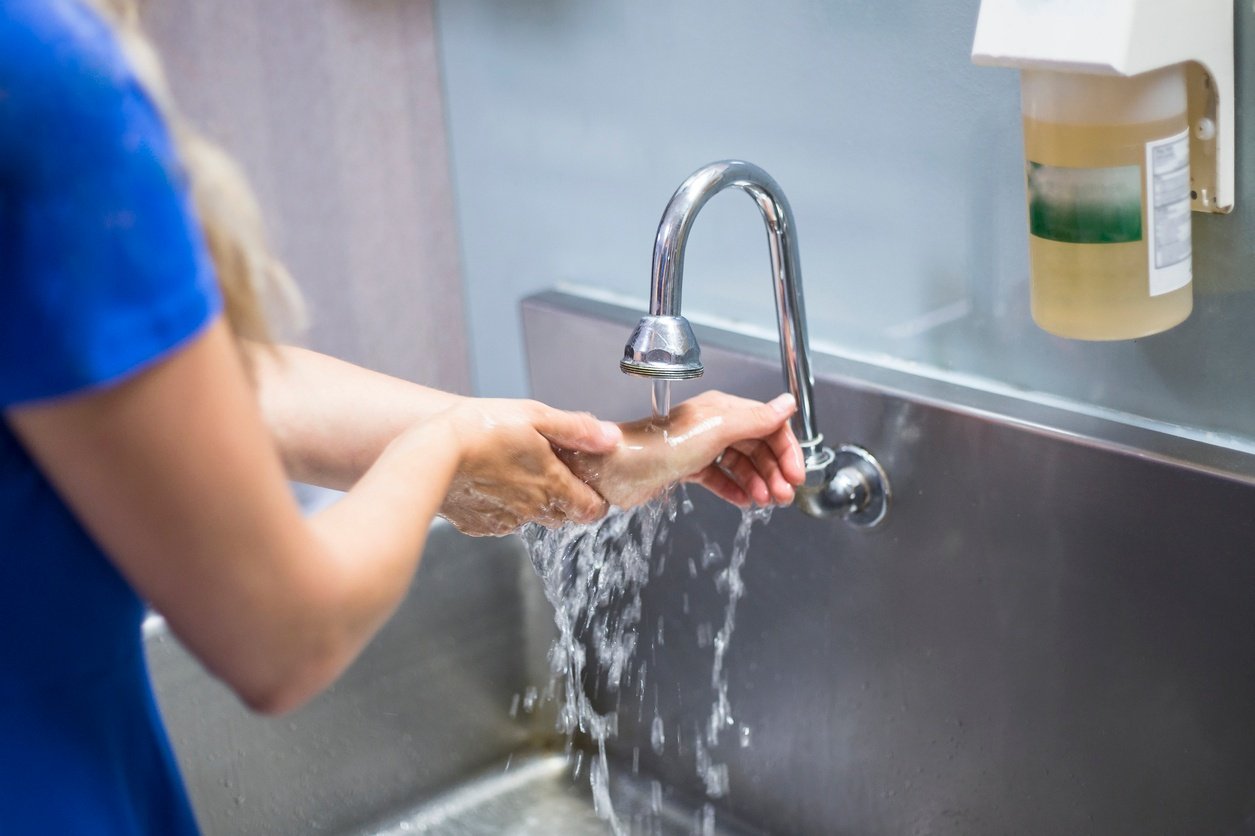
Simulated bacteria is a tool used to teach proper aseptic techniques. It’s a gel or powder that doesn’t appear in normal lighting, but glows under ultraviolet (UV) light, often called black light.
The most common use for simulated bacteria is to teach proper handwashing techniques. Students rub simulated bacteria on their hands and wash their hands normally. Then the teacher uses the UV light to identify areas the student missed. The students learn to properly and thoroughly wash their hands to prevent contamination from real pathogens in the future.
Healthcare educators have come up with alternate ways to use simulated bacteria, highlighting other important ways pathogens are spread.
- Donning and doffing: The Ebola crisis revealed poor aseptic habits among healthcare professionals. Several hospitals were forced to incorporate donning and doffing procedures related to personal protective equipment (PPE) into their continuing education for healthcare professionals. Some creative educators used simulated bacteria to demonstrate improper procedure. Incorrect donning and doffing can leave openings for pathogens to reach the students. By applying simulated bacteria directly to the PPE kit while the student is wearing it, educators can ensure students have effectively protected themselves from contamination.
- Contact with communal objects: Classrooms are a shared space with a variety of objects and surfaces that all or most people touch. Light switches, pens and papers, tables and chairs, and doorknobs are all opportunities to demonstrate the spread of contaminants. Educators apply simulated bacteria to objects and ensure unaware students touch or hold them. After 10 to 20 minutes, they use the UV light to show what students naturally touch without thinking about it, such as their faces or cell phones. This can enforce the message to wash hands often and avoid touching one’s face.
- Contact with simulated patients: Many summative scenarios involve interaction with a simulated participant or manikin. Why not incorporate simulated bacteria? Add some to the patient during an assessment. Have students wash up as they would and check them with the UV light. A summative scenario is an important final test of a student’s aseptic technique.
Healthcare providers are exposed to serious and sometimes deadly pathogens. Emphasize the importance of proper hygiene before they begin practicing in a clinical environment.
Learn more about Pocket Nurse® SimGlo Bacteria, Glo Germ™, and GlitterBug®, and find more ways to teach and ensure hygiene, from the classroom to the clinic.







